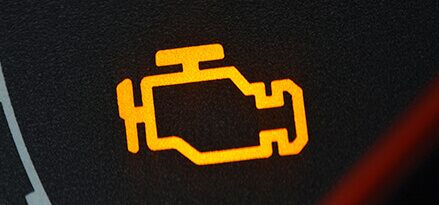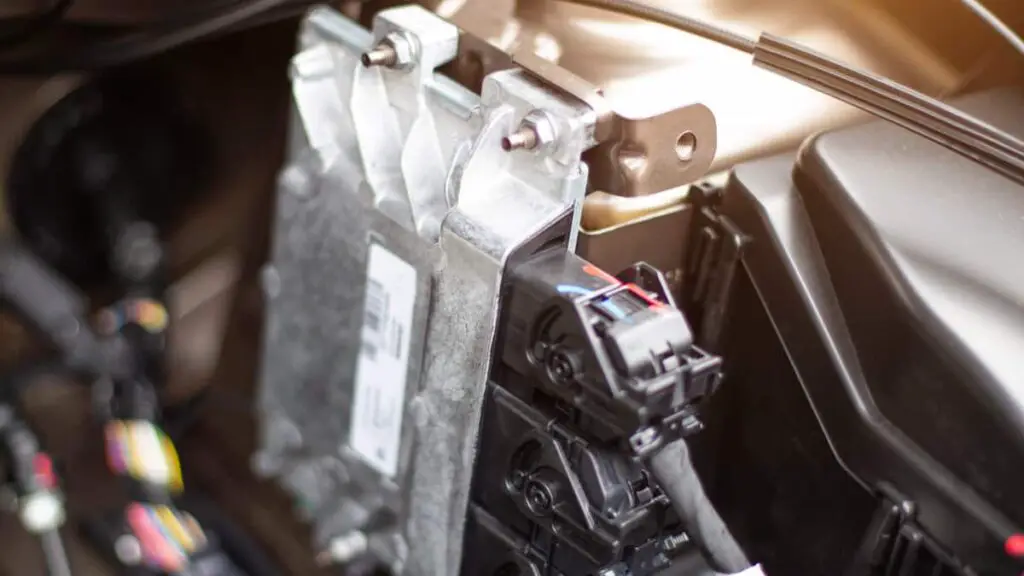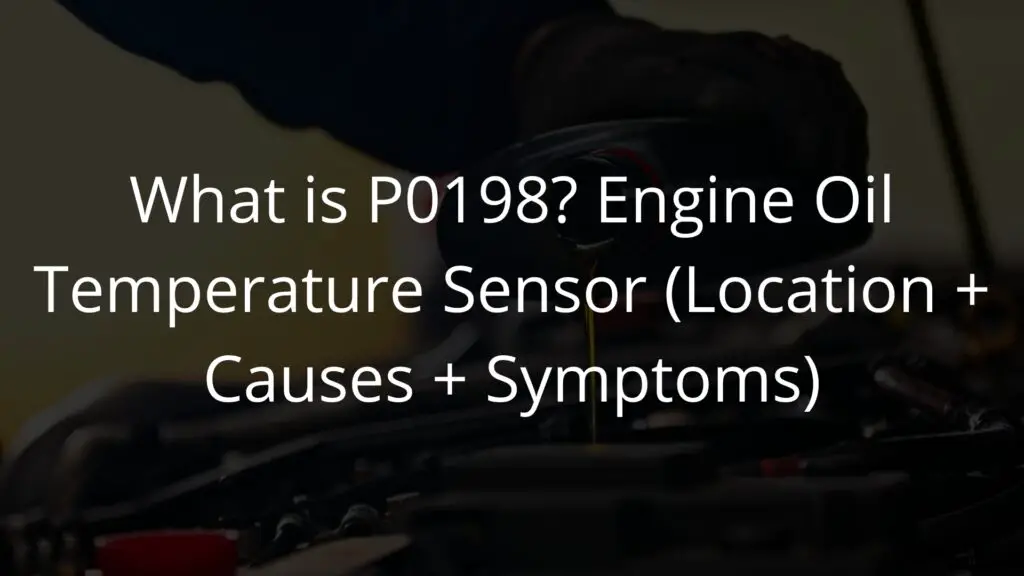P0198 is a diagnostic trouble code (DTC) that alerts drivers about a potential issue with their vehicle’s engine oil temperature sensor.
It can be of great help to vehicle owners and automotive professionals.
Let’s cover what you should know if you see P0198 in your OBD-II.
What Does P0198 Mean?
P0198 is a diagnostic trouble code (DTC) that indicates a malfunction in the engine’s fuel temperature sensor circuit. Your OBD-II may show this code when the voltage sent from the fuel temperature sensor to the engine control unit (ECU) is outside its normal range.
Symptoms of P0198 Code
Here are the other signs you might encounter with P0198:
Check engine light
The main symptom of code P0198 is the illuminated check engine light until the fault has been repaired. In some cases, this code can also cause stalling or hesitation problems when accelerating or coming to a stop.

Overheating
One of the symptoms of the P0198 code is an unusually high reading on your vehicle’s temperature gauge. If your vehicle’s temperature gauge reads higher than normal, it signals something wrong about your cooling system or other parts of your engine, and it’s time to take action.
You may also find other telltale signs, such as steam or smoke coming out from under the hood, excessive heat from your car when parked, or strange noises emanating from the radiator area.
Low Oil Level
Low oil levels are one of the symptoms of the P0198 code. Regularly check your car’s oil level and top off as needed to ensure everything is working properly.
Without enough oil, your engine will start to overheat, leading to costly repairs down the road if not taken care of immediately.

Compromised Cabin Heat
Various issues can trigger P0198, and one of the symptoms associated is compromised cabin heat. If your cabin heat has been compromised, it’s important to have a qualified technician do further testing of your car as soon as possible.
Poor Fuel Economy
Lastly, drivers may experience poor fuel economy due to an overly rich air-fuel mixture that results from faulty sensor readings.
Causes of P0198 — Engine Oil Temperature Sensor High
Now that we have covered the various symptoms of P0198, let’s uncover the common causes of P0198:
Faulty PCM
P0198 is a trouble code that indicates an abnormally high engine oil temperature. This issue can be due to a faulty powertrain control module (PCM) or other related components.
The PCM, also known as an engine control module, plays an important role in controlling the engine’s performance and monitoring various engine parameters, including the oil temperature.

Decreased Engine oil temperature
When this code is triggered, the engine oil operating temperature has exceeded its normal range. Several issues, including a decrease in engine oil temperature, can cause this.
Decreased engine oil temperature can occur due to a faulty oil pressure sensor or when the system has insufficient lubrication to keep the engine running properly. This lack of lubrication could be due to a buildup of dirt and debris or a worn-out part such as an oil filter or gasket.
Additionally, if too much water has been added to the system, it could decrease engine oil temperatures.
EOT Sensor Circuit Short-to-Power
One of the potential causes for a P0198 engine oil temperature -EOT sensor high code is an EOT circuit short-to-power.
The EOT monitors the engine’s oil temperature on top of the engine block or near the filter housing. If this circuit is short of power, it will send incorrect data to the vehicle’s computer, causing it to set an error code.

Cooling System Issues
The cause of this issue can vary depending on the cooling system problems, leading to higher engine coolant temperatures than normal temperatures. Two primary components in a vehicle’s cooling system are the radiator and the thermostat.
The radiator works by absorbing and dispersing heat from the coolant, while the thermostat regulates how much coolant is circulated throughout the system.
When either part has an issue or fails, it can lead to overheating within the car’s engine — resulting in higher-than-normal engine coolant temperature.
Wiring Problems
Wiring problems are often the culprit behind this issue and can be very complex to diagnose and repair. The first step in diagnosing wiring issues with the P0198 code is to check all the wires connected to the oil temperature sensor.
If any of them are fried or broken, replace them immediately.
How to Diagnose the P0198 Diagnostic Code?
Let’s see how you can diagnose P0198:
1. Connect OBD-II
The first step is to check for any stored codes in your vehicle’s computer system by connecting an OBD-II scanner to your car’s data link connector (DLC).

2. Inspect for Errors
If the P0198 code is present, you must look for the possible causes. You can do this by visually inspecting all engine components, such as spark plugs, hoses, and wiring harnesses.
3. Check for Loose Connections
Also, check whether there are any loose connections or corroded wires to narrow down the issue.
4. Look for Leaks
Next, inspect any vacuum leaks near the intake manifold or throttle body; if present, use a smoke machine to identify them further.
5. Test the Sensors
After inspecting all these areas, you can test the sensors. Test the target sensor’s power and ground circuits at its connector using an ohmmeter/multimeter set to read resistance (ohms).
6. Reset the Battery Connection
Lastly, ensure your vehicle is off, and the key is removed from the ignition. Disconnect the negative battery terminal and wait 30 seconds before reconnecting it again.
With this done, locate the reference voltage wire, which should be close to your throttle body or intake manifold.
How To Resolve the P0198 Code?
Here’s how you can resolve the P0198 code.
Method 1: Repair Powertrain Module
Just locate the PCM and inspect all its connectors for corrosion or damage. In case of corrosion or damage, use a wire brush to clean them up before reconnecting them to their respective wires and plugs.
Method 2: Repair Damaged Wiring
The first step to resolving the P0198 code is to thoroughly inspect the wiring under the hood for any damage or fraying. It could indicate a wire exposed to too much heat or moisture, resulting in poor connections and increased resistance.
If this is identified as the problem, you will need to replace any damaged wires and reconnect them properly according to manufacturer guidelines.
Method 3: Fix Low Engine Oil Temperature Sensor
It is found in the same vicinity as the oil filter or alongside the dipstick tube. Disconnecting and replacing it is fairly simple after locating it. For this job, you will need a socket wrench and some new replacement parts.
Method 4: Replace Oil Sensor-Pressure
Check the oil pressure switch for any signs of damage. If it looks okay, then replace it with a new one. Make sure the connections are tight, and there are no leaks or other problems before installing the new component.
Method 5: Replace EOT Sensor
This code occurs when the EOT sensor malfunctions, causing the engine to run too hot or too cold. Replacing your vehicle’s EOT sensor is essential in resolving this issue and restoring your car’s optimal performance.
Final Thoughts: What is P0198? Engine Oil Temperature Sensor
P0198 is an important code to understand for signaling a range of problems with your vehicle. Knowing the location, common causes, and symptoms of the issue can help you diagnose and repair the problem in no time.
It’s important to take prompt action if these symptoms present for your vehicle’s safety.
For more engine-oil-related problems and queries, explore our blog.



